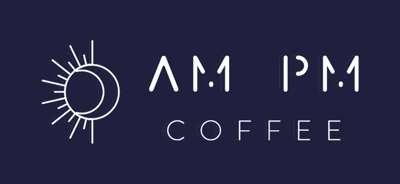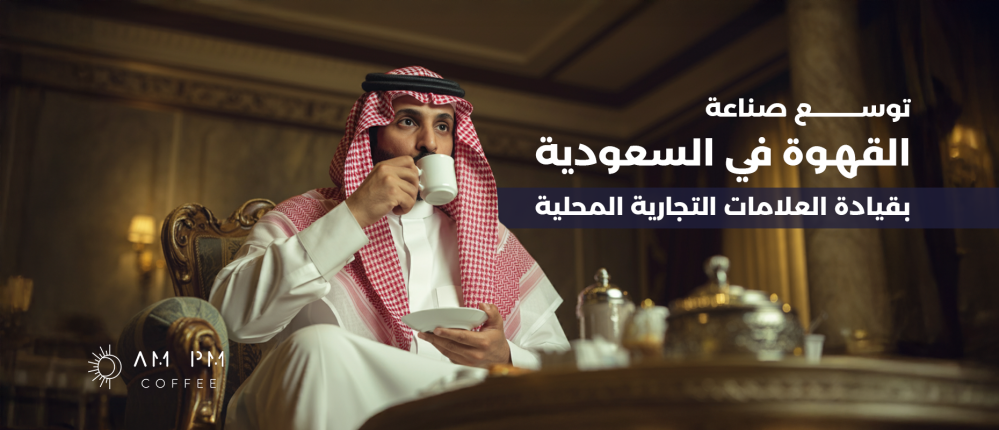Saudi Arabia’s coffee industry expands, led by local brands
In recent times, the coffee industry in Saudi Arabia has been quietly but strongly making its mark. Among the local brands, one brand in particular stands out, Half Million, which is experiencing rapid growth.
Since its inception in 2018, Half a Million has expanded at an extraordinary pace, now boasting 59 stores across 14 cities in the Kingdom.
Its popularity, driven by strategic marketing and social media campaigns, reflects not only the country’s growing passion for coffee, but also a broader trend: the rise of Saudi national brands that understand and cater to local preferences.
With Half a Million opening its doors to the international market – and especially with its new store on Oxford Street, one of London’s most famous shopping areas – it is clear that this homegrown Saudi brand is targeting a much bigger stage.
Half a Million’s journey from a single store in Riyadh to an international presence in just six years embodies its aggressive expansion strategy. Founded in 2018, the chain has rapidly expanded its operations across the Kingdom. Its recent foray into London, with a store on the famous Oxford Street, signals its intention to expand beyond Saudi Arabia’s borders.
What's interesting is what sets the "half a million" apart in an increasingly crowded market.
At first glance, it may not be the coffee that attracts loyal customers. Reviews often highlight that the product itself isn’t amazing. Instead, it’s the brand’s polished aesthetic and ambitious marketing that has captivated Saudi consumers. The chain has mastered the art of selling more than just coffee; it’s selling a lifestyle.
The story being marketed is a simple, heroic one – “two friends entered the business world with a capital of 500,000 Saudi riyals” (about $130) – which is the reason for the name. Whether or not this story is true (some tell a different story), it has now become a full-fledged project associated with the glitz and glamour of wealthy influencers.
“The entrepreneurs who started Half a Million come from very wealthy backgrounds,” says an anonymous Saudi green coffee trader. “So they could afford it for a while until they started making profits. They were able to play the price war game and open several locations – many of them premium – while offering lower prices for their coffee than others. That’s one of the main reasons for their success. The quality isn’t the best, but they made up for it with competitive prices.”
Central to their strategy, and that of other local brands, is the reciprocal relationship between the brand and social media influencers. The success of “Half a Million” is linked to Saudi Arabia’s wealthy, social media-savvy youth, who are quick to embrace the latest trends.
The company's marketing strategy leans heavily on platforms like Snapchat and Instagram (it has 327,000 followers), where influencers with large followings share photos of themselves sipping "half a million" coffees between trips to luxury global destinations like Courchevel or Los Angeles.
The brand has capitalized on this lifestyle connection, positioning itself as the go-to coffee chain for the aspirational Saudi middle class who want to replicate the luxury experiences they see online. Half a Million’s rapid expansion is a testament to how well it understands and exploits these social dynamics.
The success of “Half a Million” is not an anomaly. Its rise is part of a broader trend in Saudi Arabia, where local brands are thriving in a market historically dominated by global brands.
Coffee consumption in the Kingdom has seen a significant increase in recent years, especially among young Saudis who see coffee shops not just as places to get a quick drink, but as social hubs where they can meet friends, work remotely, and socialize.
In 2022, the branded coffee shop market in Saudi Arabia grew by 18.5% to reach 3,550 outlets. Saudi Arabia ranks among the top 10 countries in coffee consumption, with demand exceeding 80,000 tons annually.
As Saudi Arabia modernizes itself, driven by the ambitious Vision 2030 plan, a sense of national pride is also fueling the success of homegrown brands. In May 2022, the Public Investment Fund (PIF) launched the Saudi Coffee Company, which is investing $319 million over the next 10 years to support the growth of the national coffee industry – from production to consumption.
Here, Half a Million and Barn – the country’s largest chain with 700 stores – have found their niche. It’s not just about selling coffee; it’s about selling a lifestyle that combines local culture with global aspirations. They know how to cater to the luxury tastes of Saudis while maintaining accessibility for the average consumer.
Despite opening its 400th store in the kingdom in 2023, Starbucks is struggling to compete with local brands — also due to geopolitical turmoil in the region and boycotts over alleged support for Israel’s ongoing military offensive in Gaza.
While Starbucks may focus on its consistent global offering, Half a Million understands that the Saudi market craves a mix of familiarity and ambitious innovation.
“We Saudis started supporting local brands because they meet our standards,” says Bader Al-Qurashi, R&D manager at Saudi Coffee Company.
Local chains like Half a Million have an advantage over global competitors like Starbucks because they are more attuned to the unique cultural nuances of the Saudi market. Local brands are better able to cater to these preferences, from menu items that reflect local tastes to marketing that resonates with a young, social media-driven consumer base.
“They beat Starbucks because it’s an American brand – not a local brand,” says one. “So people want to support ‘local.’ Half a million customers are looking for lifestyle and glitz, not so much taste or quality. If it looks good, tastes good and is reasonably priced, that’s a winning formula.”
It’s also worth noting that the Saudi market is far larger than its regional neighbors. The UAE, often seen as the Gulf’s hub for luxury and innovation, is relatively small. Saudi Arabia, with its dense population and high disposable incomes, presents a much bigger and more lucrative opportunity for brands like Half a Million.
Coffee consumption is booming, and with it the potential for sales. Even with its rapid expansion, Half a Million is still only scratching the surface of the Kingdom’s demand for premium, experience-driven coffee.
Can Half a Million and other brands sustain themselves in this market?
While the growth of “half a million” has been impressive, the question is: can this momentum be maintained?
For a brand that invests significant resources in expansion, the operating costs—especially in a city like London—are not trivial. Rent, labor, and sourcing high-quality ingredients all add up, and it’s not entirely clear how Half a Million plans to maintain profitability in a market where customer traffic, especially outside peak hours, can be inconsistent.
One possible strategy is to follow the path of international brands such as Blue Bottle, which expanded dramatically before being sold to Nestlé in 2017.
With investors increasingly excited about the prospects for homegrown Saudi brands, Half Million may be in a position to make a similar exit. Venture capital has already played a big role in the growth of other coffee chains, such as Blank Street in the US.
Half a Million could look to capitalize on a similar strategy, expanding rapidly to build brand recognition and customer loyalty before seeking investment from a major player in the global coffee industry.
“The entrepreneurs behind Half a Million are a very well-known and wealthy family, and their business strategy is based on low profit with high volume across all sectors,” says Bader. “They are very well established in terms of product, service, consistent quality, locations and pricing.”
However, the Saudi market presents some unique challenges. While influencer marketing has helped drive the rise of Half a Million, it’s uncertain how long this strategy will last.
Social media trends are very fickle, and what’s in fashion today may not be tomorrow. A brand’s reliance on influencers, while effective now, can be a double-edged sword if the tides of social media change. Their online presence is also limited, with most of their marketing done on social media platforms. This reliance on social media, while great for brand awareness in the short term, may not be enough to maintain customer loyalty in the long run.
Despite these challenges, Half a Million’s aggressive expansion—both in Saudi Arabia and abroad—points to its ambitions to become a major player in the global coffee market.
Another says, "They can sustain their growth in the long run because they've reached a point where they're like Dunkin' Donuts or one of those brands that people want regardless of whether it's the best."
Investors appear willing to bet on the brand and coffee in general, seeing it as a potential Saudi success story that can export its formula for success internationally. Whether this strategy will pay off in the long run remains to be seen, but for now, Half a Million is riding a wave of rapid growth and influencer-driven success that shows no signs of slowing down.
Half a Million is more than just a coffee chain – it’s a reflection of a broader shift in Saudi Arabia. As the Kingdom modernizes and the consumer landscape changes, homegrown brands like Half a Million are at the forefront of a new wave of Saudi entrepreneurship.
The brand’s rapid expansion, influencer-driven marketing, and international ambitions suggest it’s ready to compete on the global stage. But with rising operating costs, a volatile social media landscape, and fierce competition, the question remains: Can Half a Million sustain its remarkable growth?
For now, the brand seems determined to make its mark – not just in Saudi Arabia, but around the world.

